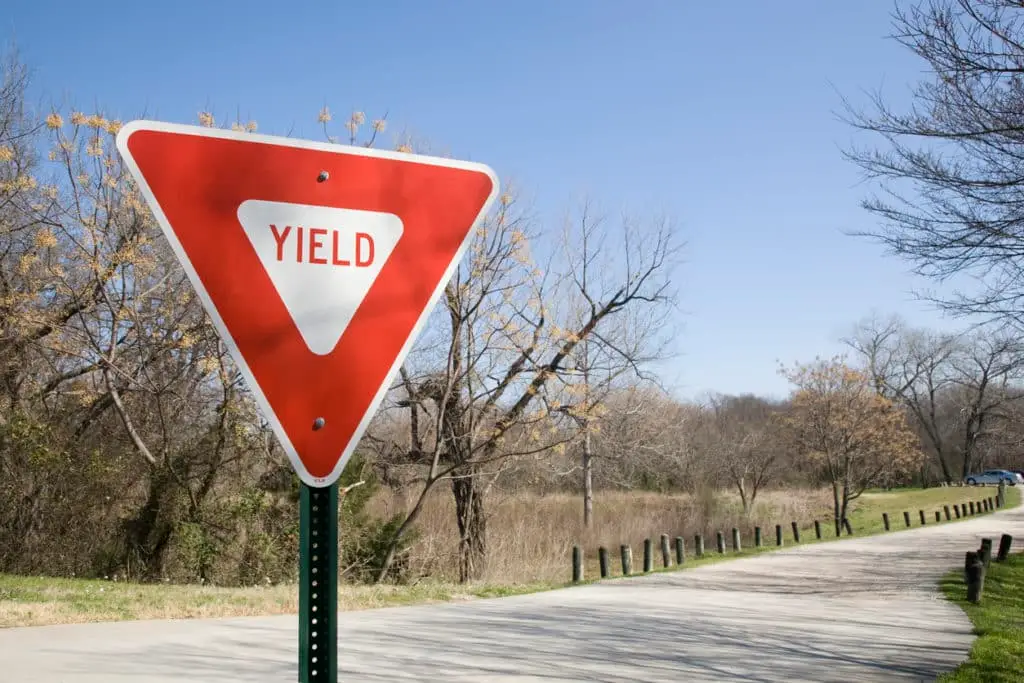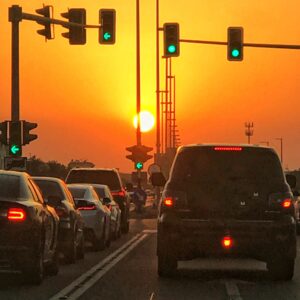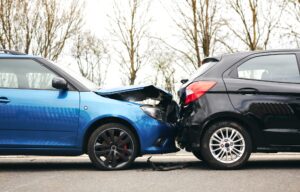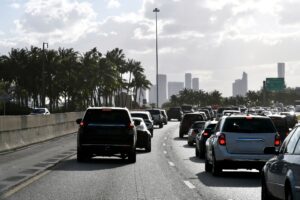Table of Contents
ToggleWhat Does Yielding the Right of Way Mean?

Yielding the right of way is a common term we all hear when first learning to drive while taking online or in-person driving courses. However, it is always important to take a refresher course on how to properly yield to other drivers on the road to help prevent car accidents.
Yielding the right of way simply means allowing another driver to go first. For instance, if you and another driver are at a four-way stop sign, you may yield to the other driver to turn left before you proceed with your car to go straight. The trick is to know when you must yield.
When Must a Driver Yield To Another Driver in California?
California law on yielding the right of way is summarized below:
Intersections
If two drivers reach an intersection at the same time, the driver on the right has the right of way. The other driver to the left should allow the driver on the right to go first. However, there are certain circumstances that will fall into an exception:
Three-Way Intersections
This type of intersection is one that has a road ending at another that is perpendicular to the first road. It basically looks like a “T.” A driver at a three-way intersection with a stop sign must remain stopped. Once the other drivers have cleared, the driver at the stop sign may turn. If there is no stop sign, the driver on the road that dead ends must stop and wait for the other drivers to clear.
Traffic Signals or Signs
If there are traffic signals or signs operating in an intersection, those signs or signals will indicate the right of way to drivers.
The following are examples of the purposes and functions of some traffic signs and signals:
- Stop sign – Drivers should come to a complete stop and only proceed through the stop sign when it is safe.
- Flashing red light – Flashing red lights are basically stop signs. The same rules as stop signs apply.
- Yield sign – Drivers must slow down when a yield sign is present. Additionally, they should be cautious and watchful when coming to an intersection. The drivers that are on the intersecting street have the right of way. Only when a driver sees no other oncoming vehicles should the yielding driver proceed onto the intersecting road.
- Flashing yellow light – A flashing yellow light alerts drivers to be cautious going through an intersection.
- Non-working traffic signal – If a traffic signal is not operating, drivers should treat this intersection as a four-way stop. As described above, if multiple drivers arrive at the intersection at the same time, the driver to the right has the right of way.
You should also cautiously proceed if you approach train tracks, which may or may not have a sign or signal.
Left-Hand Turns
When a driver wants to make a left-hand turn, the following precautions should be taken:
- Wait for a green light.
- If there is no greenlight arrow, yield to oncoming traffic before turning left.
- Remain stationary until the arrow turns green (if there is one).
- Yield to vehicles on your left turning right if making a U-turn.
Left-turn accidents can be dangerous maneuvers, so following these steps will help prevent collisions.
Roundabouts
This type of intersection is uniquely designed to allow traffic to move in a circle counter-clockwise. A driver proceeding towards a roundabout must yield to other drivers (and bicyclists) in the roundabout.
Whatever you do, do not stop to allow other drivers into the roundabout; this will most likely cause an accident. When a driver is ready to exit, they must yield to any present pedestrians or bicyclists.
Mountain Roads
California’s laws on the right of way for mountain roads state that if there are two drivers on a steep road and neither of those drivers can pass, the driver going up the mountain will have to back up to allow the driver going down the mountain to pass first.
Pedestrians
Drivers must also yield the right of way to pedestrians, including people who are walking or running, on skateboards, on rollerblades, or in wheelchairs. Drivers are expected to stop for pedestrians that are in or approaching a crosswalk and even yield to “jaywalkers.”
Most importantly, a driver must yield to an individual who is blind when they extend their cane (or proceed with a guide dog), signaling that they wish to enter the crosswalk area.
Failing To Yield the Right of Way Can Lead to Serious Consequences
Failing to yield the right of way can have serious consequences, such as traffic citations leading to fines.
Additionally, if a driver fails to yield the right of way, they could possibly cause a car accident. They could be responsible for any injuries or damages caused. After a collision, it is wise to contact an experienced Los Angeles car accident attorney for assistance.
Unfortunately, not all drivers on the road are safe drivers that follow the rules of the road, so you need to be cautious. Even if you have the right of way per the law, other drivers on the road may not care or may not be driving reasonably. This is why you should always be cautious and proactive when driving.
Contact Our Car Accident Law Firm in Los Angeles, CA
If you were injured in an accident in Los Angeles, CA or you lost a loved one and you need legal assistance, please contact us to schedule a free consultation. One of our Los Angeles car accident lawyers at M&Y Personal Injury Lawyers will get in touch with you soon.
M&Y Personal Injury Lawyers – Los Angeles Office
4929 Wilshire Blvd Suite 960,
Los Angeles, CA 90010
866-864-5477




